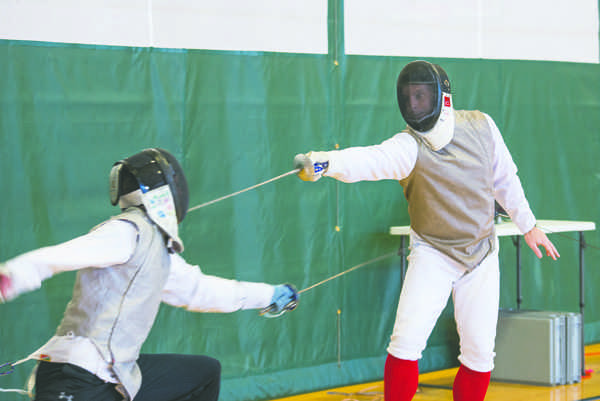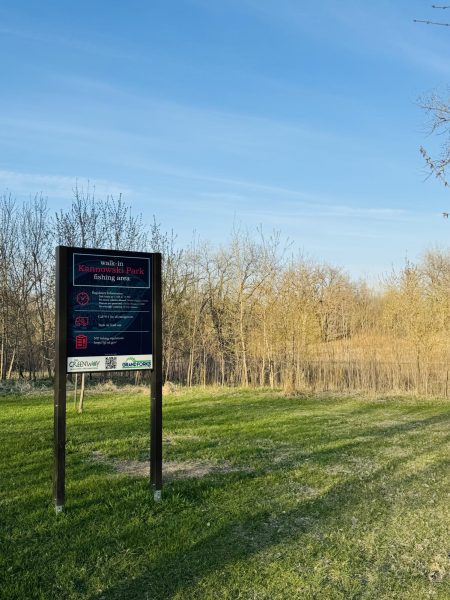Slashing through stereotypes
Clay Willoughby and Quinn Shynkaruk duel each other during practice. Photo by Nick Nelson/ The Dakota Student
It’s one of the oldest clubs at the University of North Dakota, coming into creation in 1924. The UND fencing club teaches students and people from the community the ins-and-outs of the swashbuckling sport.
Fencing has been around for a long time. It slowly changed from a military exercise to a sport around the 14th to 15th century and has been part of the olympics since 1896.
Fencing is not like other sports. It has some different characteristics to it.
“It’s an art form,” UND fencing teacher Mike Anson said. “People don’t always see it like that.” After watching a practice, it’s hard to disagree.”
Timing and agility are extremely important in fencing, but just as important as those attributes is knowledge. Without the proper knowledge, even the quickest person would struggle.
“It’s chess at 100 miles per hour,” UND fencing club president and advisor Clay Willoughby said. “You always have to be three steps ahead.”
Anson’s teaching style is unique. First, he teaches a group of two students a technique. Then, he has them rotate partners where they teach each other the technique they have just learned, and then they practice said techniques.
“To say it, then mimic what I’ve done, that’s external,” Anson said. “But when they have to teach it to each other, they have to really know it, and that’s internal.”
The fencing club is open to anyone. There is no prior fencing experience needed to join. The group consists of a range of beginners to more experienced fencers.
There are three main styles of fencing, including foil, epee, and saber. Each style has rules as to how you obtain points. The fencing club most commonly uses foil, but will teach with the other styles at times as well.
“We like to start new students out using foil because it teaches them the basics of fencing.” Willoughby said.
Foil differs from the other forms of fencing in a couple ways. Points are scored by striking your opponent with the tip of your weapon on the torso, front or back. It also has the concept of right-of-way meaning as the first person to be attacked has to defend themselves before they themselves can attack.
Almost everybody has seen “The Princess Bride” and knows the line “you killed my father, prepare to die,” followed by a sword fight with foil-like weapons. This is what everybody has come to associate with the sport of fencing.
“People come in and they want to do what they’ve seen in movies like Zorro or the Princess Bride, but that’s a bit dramatized for TV purposes,” Willoughby said.
Another common misconception is that fencing is a dangerous sport. While the weapons may be off-putting, there are many safety precautions taken. From the helmet with mesh-like face protection, to the heavy padded jacket, these fencers are protected.
“Anybody can fence, from ages 12-85, they can do it if they are willing to work at it,” Anson said.
The club goes to competitions everywhere from Minneapolis to Winnipeg, but the amount of competitions they attend varies year to year.
Along with the club, there is also a class that students can take. Since it is a class, only UND students can attend. The class is like the club where anyone can sign up for it no matter what skill level you possess. It’s not uncommon for students that take the class to end up going the club.
The club meets Mondays and Wednesdays from 7 p.m.-9 p.m. in room 370 of the Hyslop complex.
If students are interested, they can contact the club president, Clay Willoughby at [email protected].
Adam Gunderman is a sports writer for The Dakota Student. He can be reached at [email protected]
















